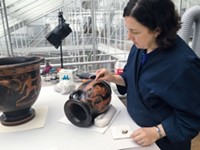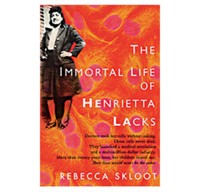Advertisement
Grab your lab coat. Let's get started
Welcome!
Welcome!
Create an account below to get 6 C&EN articles per month, receive newsletters and more - all free.
It seems this is your first time logging in online. Please enter the following information to continue.
As an ACS member you automatically get access to this site. All we need is few more details to create your reading experience.
Not you? Sign in with a different account.
Not you? Sign in with a different account.
ERROR 1
ERROR 1
ERROR 2
ERROR 2
ERROR 2
ERROR 2
ERROR 2
Password and Confirm password must match.
If you have an ACS member number, please enter it here so we can link this account to your membership. (optional)
ERROR 2
ACS values your privacy. By submitting your information, you are gaining access to C&EN and subscribing to our weekly newsletter. We use the information you provide to make your reading experience better, and we will never sell your data to third party members.
Analytical Chemistry
Nana's NanoVisions
An artist discovers her visual icon in a life-or-death medical moment
by Ivan Amato
July 21, 2008
| A version of this story appeared in
Volume 86, Issue 29

HER ENTRY into the artistic interpretation of molecular and cellular biology couldn't have begun in a higher stakes way. In 1988, Nana Bagdavadze's little sister, Zizi, then in her early 20s and in their family's hometown of Tbilisi, in the former Soviet Republic of Georgia, was dying of chronic myelogenous leukemia—a cancer that leads to overproduction of several blood components, including red blood cells and platelets. The only viable treatment required Zizi's own blood-making bone marrow to be destroyed by chemicals and radiation and then resurrected, hopefully, with an infusion of healthy bone marrow from a person who was a near-perfect immunological double.
"I was a match," Bagdavadze recalls, still now—two decades later—with joy in her eyes.
At a time when information was way harder to come by, Bagdavadze and her family were able to learn that one of the best places in the world for the bone marrow transplant procedure—a place where half the patients survive—was the Fred Hutchinson Cancer Research Center, in Seattle. Had the Soviet Union's days not been numbered in 1988, and had the dissipation of Cold War animosity not been in full swing, a medical trip to Seattle would have been all but impossible.
"Perestroika helped us get out," Bagdavadze says, referring to the unprecedented program of transparency and openness that Soviet leader Mikhail Gorbachev had been orchestrating.
At the hospital in Seattle, a team of doctors, including some who had pioneered the bone marrow transplant procedure in the 1960s and '70s, extracted marrow from Bagdavadze's hips and injected it into her ailing sister. "On day 21, the cells took hold," Nana says, a clockwork milestone for successful procedures. "She is alive today," Bagdavadze says of Zizi, who works as a designer and illustrator of books, including fairy tales.

EVEN AS IT SAVED her sister's life, the bone marrow transplant was a life-transforming event for Bagdavadze as an artist. Trained in classical European painting techniques at the finest art schools in Georgia, Bagdavadze found herself visualizing the cells that had both threatened her sister's life and saved it, as well as life's most iconic molecule, DNA. All of that talk with doctors and all of the reading of journal articles had something to do with it. "It was living in me," she says of DNA's double-helical motif. "Sometimes I think I can see DNA."
Through her own interpretive filters developed from her training in Georgia and her experiences as an artist and teacher since the 1990s, when she moved to the U.S. permanently, Bagdavadze has developed her own aesthetic approach to rendering DNA. Outlining her compositions first in charcoal, Bagdavadze prefers to use oil-based paints because they afford her more time to work on the canvas and blend paints on the fly, compared with quicker drying acrylics. "Oils give you time to create," she says.
Over the years, Bagdavadze has painted dozens of DNA-inspired compositions, many of them filled with cell-like shapes—or nanoparticles as Bagdavadze sometimes refers to them—that overlay backgrounds often suggestive of other biomolecules or a cell's cytoplasmic milieu. These and other works—including many portraits, which have been a central art form for her—hang in schools, institutions such as the American Cancer Society, private collections, and medical venues. The Fred Hutchinson Cancer Research Center, for example, has displayed a series of her paintings called "DNA Variations."
This past May and June at a large annual group art show in Washington, D.C., called Artomatic, Bagdavadze hung several of her DNA paintings in an assemblage she called "Divine Particles." To this chemically minded visitor at the show, the DNA motifs had a magnetic effect. In an artist's statement next to the paintings, she wrote that after her sister's surgery, she "had become fascinated by the nanoworld and genetic images."
"In the search for the beauty of the particles, hidden from the human eye, I was inspired by the idea of forms rather than the scientific truth," her statement notes. "As a fine artist, I am aware that the visual world is governed by its own visual laws."
Bagdavadze, mother of two grown boys, now lives in Washington, D.C., with her second husband, a Republic of Georgia-born space weather researcher at the National Aeronautic & Space Administration's Goddard Space Flight Center, in Greenbelt, Md. So these days, imagery of outer space adds to the inner-space imagery of cells and molecules that have long inspired her. But it's the DNA imagery that she talks about most. Says Bagdavadze, "In my work, the double helix has become a symbol of life and of constant movement."







Join the conversation
Contact the reporter
Submit a Letter to the Editor for publication
Engage with us on Twitter